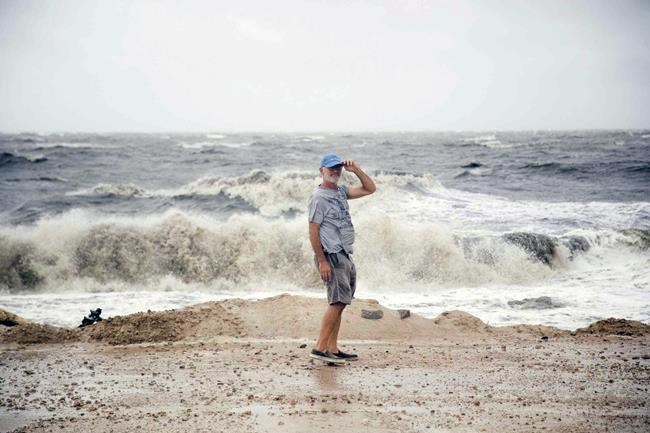Tropical Storm Fred trekked inland spreading heavy rains over the U.S. Southeast early Tuesday while earthquake-damaged Haiti reeled under a drenching from Grace, a depression that regained tropical storm status overnight.
No deaths have been reported from Fred, though thousands of Florida Panhandle residents were reported without power in the hours after its late Monday landfall. Emergency crews in the Panhandle were repairing downed power lines and clearing toppled trees in Fred's aftermath.
Elsewhere, reconnaissance aircraft found Grace had regained tropical cyclone strength early Tuesday and was dumping extremely heavy rains and causing flooding across parts of Haiti and the Dominican Republic, the U.S. National Hurricane Center in Miami said.
In the U.S., Fred crashed ashore Monday afternoon near Cape San Blas in the Florida Panhandle and by Tuesday morning it was crossing southeast Alabama into Georgia. A forecast tracked showed the storm would spend much of Tuesday over western and north Georgia and then enter the southern Appalachians by Tuesday evening before moving into the mid-Atlantic states.
Top sustained winds dropped to 40 mph (65 kph) overnight and Fred was moving north-northeast at 13 mph (20 kph). Fred was spreading heavy rains into the Southeast on a path expected to take it later this week in the mid-Atlantic states and beyond.
Forecasters expected Fred to drop 4 to 8 inches (10 to 20 centimeters) from Florida's Panhandle into parts of Alabama, Georgia and the Carolinas — and even nearly a foot (30 centimeters) of rain in isolated spots. They also warned Fred could eventually dump heavy rain into the mid-Atlantic states, possibly causing flash floods from overflowing rivers and even landslides in the Blue Ridge mountains.
Meanwhile, Grace lashed earthquake-damaged Haiti as a tropical depression on Monday, dumping up to 10 inches (25 centimeters) of rain before regaining tropical storm status early Tuesday. The heavy rains pelted people huddling in fields and searching for survivors.
The storm couldn't have come at a worse time for Haitians struggling to deal with the effects of Saturday's 7.2 magnitude earthquake, blamed for an estimated 1,300 deaths. Grace was expected to become a tropical storm again as it passes between Cuba and Jamaica on Tuesday and could be near hurricane strength when it approaches Mexico's Yucatan peninsula Wednesday night.
U.S. forecasters said Tropical Storm Grace was moving early Tuesday near the Tiburon Peninsula of Haiti on a forecast track expected to take it between southeastern Cuba and Jamaica by Tuesday afternoon. It had top sustained winds of 35 mph (55 kph) and was moving to the west near 14 mph (22 kph).
The Miami-based U.S. hurricane center said Grace is expected to gain strength in the coming days and could be near hurricane strength when it approaches Mexico’s Yucatan peninsula late Wedneday or early Thursday.
Tropical Storm Henri, meanwhile, formed Monday southeast of Bermuda and was about 140 miles (230 kilometers) southeast of that island late Monday night. The storm had 45 mph (75 kph) winds and was moving south-southwest at 5 mph (7kph). A tropical storm watch was in effect for the island.
The Associated Press



